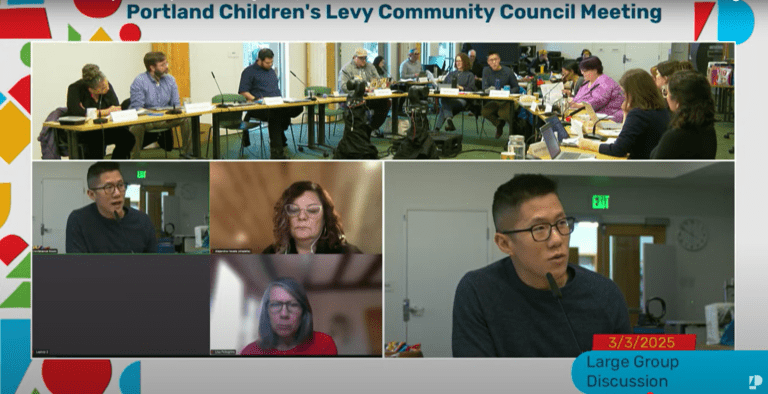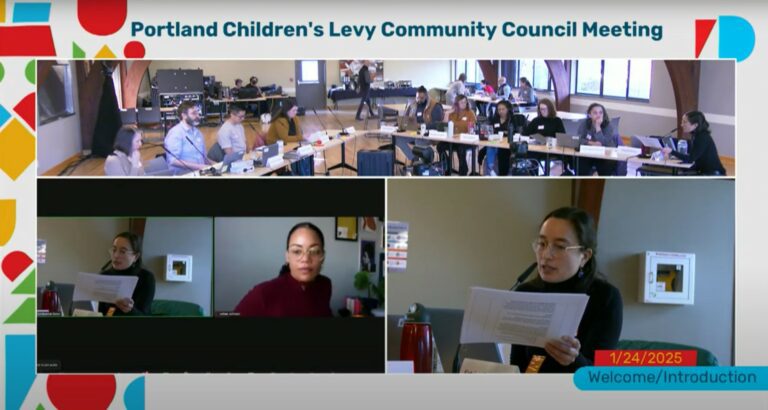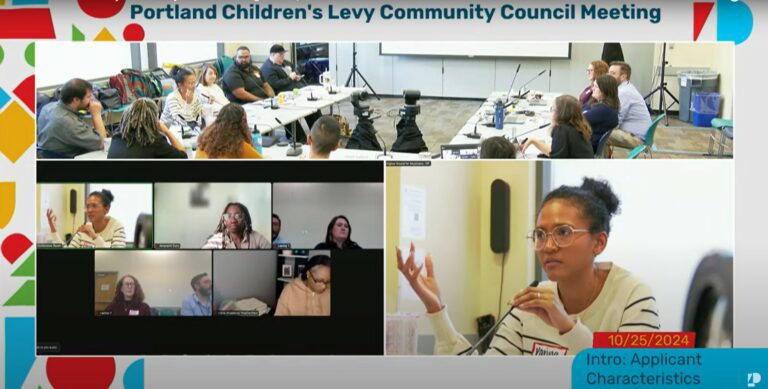Community Council meeting recap (7-28-25)
Welcome to the recap of the July 28, 2025 Community Council meeting. Ten out of 13 members attended the meeting.
Meeting outcomes
- Provide input on the Community Council’s role in the upcoming small grants funding process.
- Advise staff on whether an organization can reapply for funding in the small grants funding round if they received funding during the last small grants funding cycle.
- Generate prompts for the video component of the small grants application.
- Provide feedback to staff on the large grants funding process.
Meeting summary
1. Community Council role in small grants funding process (15:30 – 34:50 in meeting recording)
Community Council members agreed to play two roles in the upcoming small grants funding process: 1) review and score small grants applicant videos and 2) participate in making funding recommendations to the Allocation Committee. To participate in the funding recommendations meeting, Community Council members will need to have watched and scored all applicant videos. (Please see slide #8 in the meeting slide deck for a draft timeline of the small grants funding process.)
2. Small grants fund policy question (34:50 – 1:18:50)
Community Council members voted 9 – 1 to allow organizations that received funding during the previous small grants funding round to reapply for funding in this upcoming small grants funding round. Reasons for allowing organizations to reapply included the desire to:
- allow small organizations to apply for stable, multi-year funding. This policy is consistent with large grants policy. Community Council members didn’t want to place a restriction on small grants applicants that doesn’t exist for large grants applicants.
- invest in programs that might require many years of sustainable funding to produce positive outcomes.
- allow organizations to grow at their own pace or stay the size that is appropriate to the work that they are doing, without creating pressure for small organizations to grow their annual revenues to be eligible for large grants.
- not be biased against past grantees who performed well.
Reasons for restricting small grants funding to one-time access included the desire to:
- reduce expectations or assumptions that previous grantees will receive ongoing PCL funding.
- prioritize organizations who haven’t previously received PCL funds.
3. Prompts for video component of small grants application (1:30:20 – 1:36:25)
Community Council members worked in small groups to brainstorm prompts for the video component of the small grants application. The following types of prompts emerged:
- What challenges are you working to resolve in community, and what solutions are you bringing?
- Tell a success story about your programming. Tell us about your expertise delivering these services.
- What does success look like? What outcomes are you working toward?
- Where does an applicant see themselves after 3 years of investment? How would this funding transform your work?
- What obstacles are you facing, and what supports do you need to be successful?
- How is the program designed with and for the community?
Community Council members also reflected on the type of instruction and guidance provided to applicants and made the following recommendations:
- Advise applicants to make a draft video, watch it, and identify what they want to feature in their final video submission.
- Provide age guidelines for kids and youth showcased in the video. Recommendation that speakers are 16 or older.
- On the number of prompts, a variety of ideas emerged:
- Provide two open-ended prompts and allow applicants to determine the best way to respond; if more prompts are provided an applicant may feel pressured to answer most of the questions.
- Provide a selection of questions for applicants to choose amongst.
- Require applicants answer some prompts and include another set of prompts from which applicants can choose the most relevant question.
One small group noted that reviewing and scoring the videos without the context provided by the written component of the application would be challenging. They were curious if they could have access to the written component of the application, and if not, requested a short staff overview with higher level supplemental and additional info, rather than deeper detailed program design, to accompany the videos.
4. Large grants funding process feedback (2:19:00 – 3:08:00)
Community Council members asked the questions and provided the ideas detailed below. Summaries of staff responses are included.
- What opportunities exist for relationship and trust building between staff and City Council, and between the Allocation Committee and City Council?
- Staff: Relationships between city staff and City Council are maintained at the Service Area/Deputy City Administrator level, which is a level above PCL’s Director and structurally limits our ability to communicate directly with City Council and their staff.
- Does staff have lessons learned that could be applied to the next funding round? Ideas for how to improve the application and/or review process for the next round?
- Staff: Staff are still identifying lessons learned and places for improvement.
- PCL is unique amongst government grant-makers in allowing testimony about funding recommendations and decisions; this practice can favor organizations that are more politically connected. It’s up to the Allocation Committee to determine what type of feedback to accept from applicants and what the bounds of that feedback should be.
- Do you anticipate a repeat of this experience with the next funding cycle?
- Staff: We don’t know. We are preparing a report for City Council this fall and hope to brief them on the small grants funding process at that time.
In addition to this summary of the large group questions and feedback, staff will review the feedback forms submitted during this meeting and conduct 1-1s with Community Council members. Staff will publish a separate and more thorough overview of Community Council feedback about the large grants funding process later this year.
To achieve the outcome, council members discussed and voted on two portfolio options of applications. The Community Council voted unanimously (11/11) to recommend Portfolio A for funding, and in a follow-up survey, provided the following reasons for selecting Portfolio A:
- Desire to prioritize funding a higher number of applications, instead of funding fewer at a slightly higher level
- Provide more funding for foster care and hunger relief, which were mentioned as urgent and critical needs


